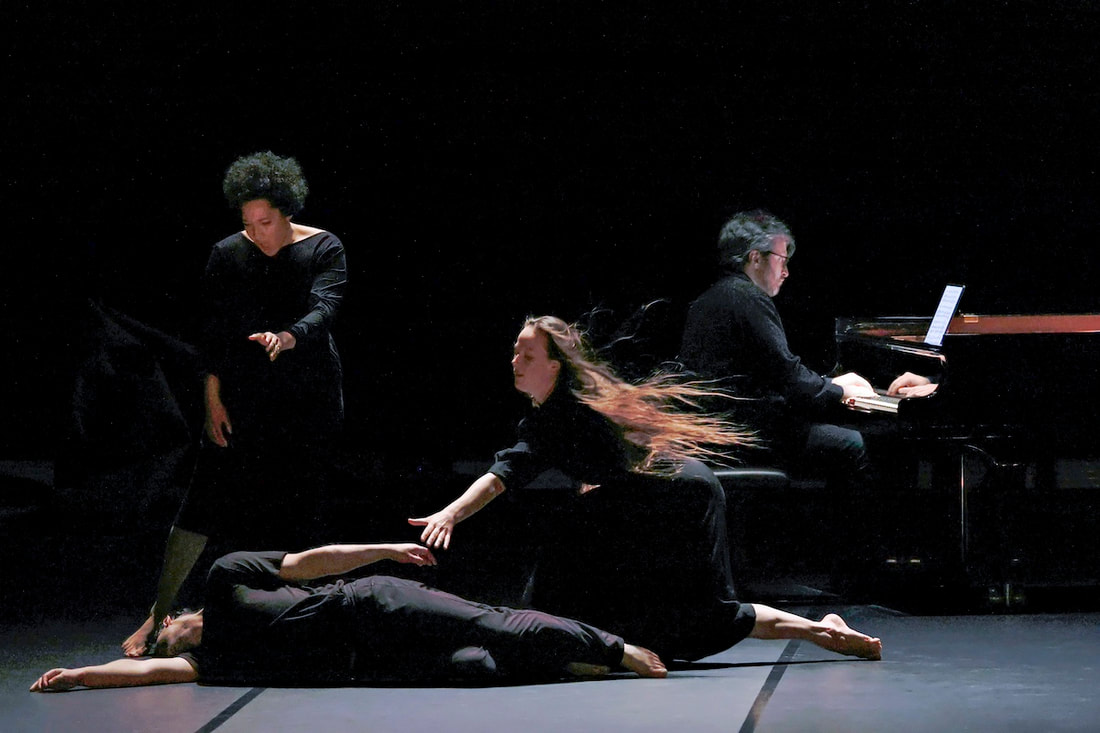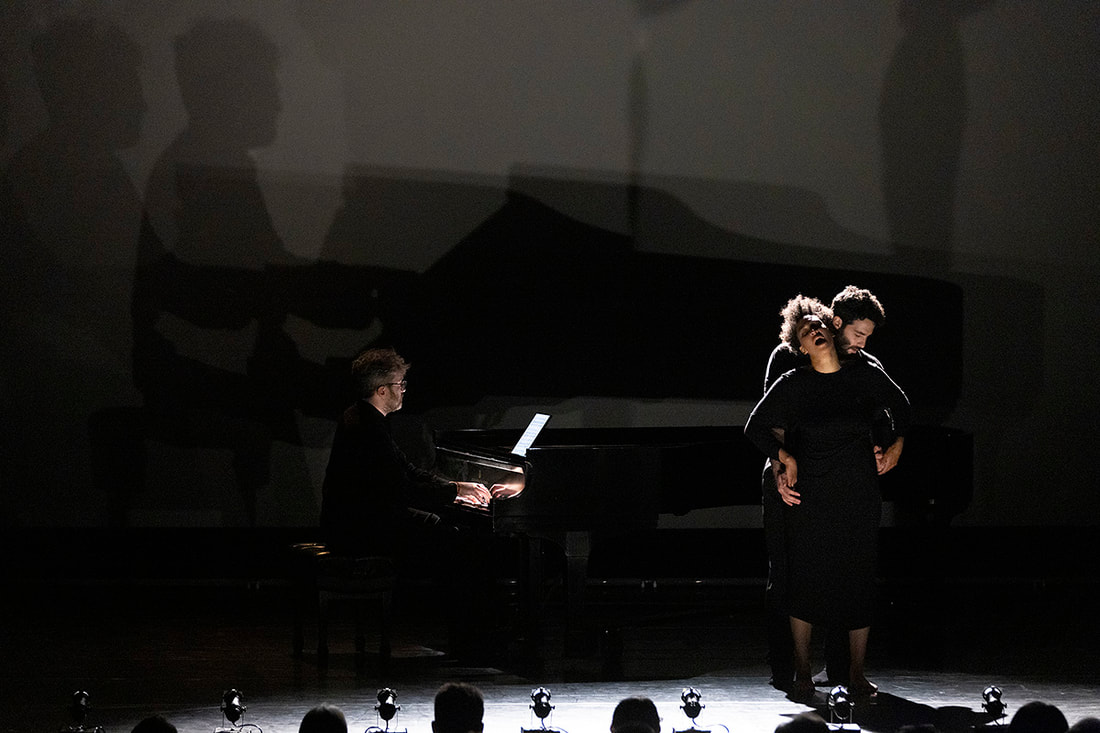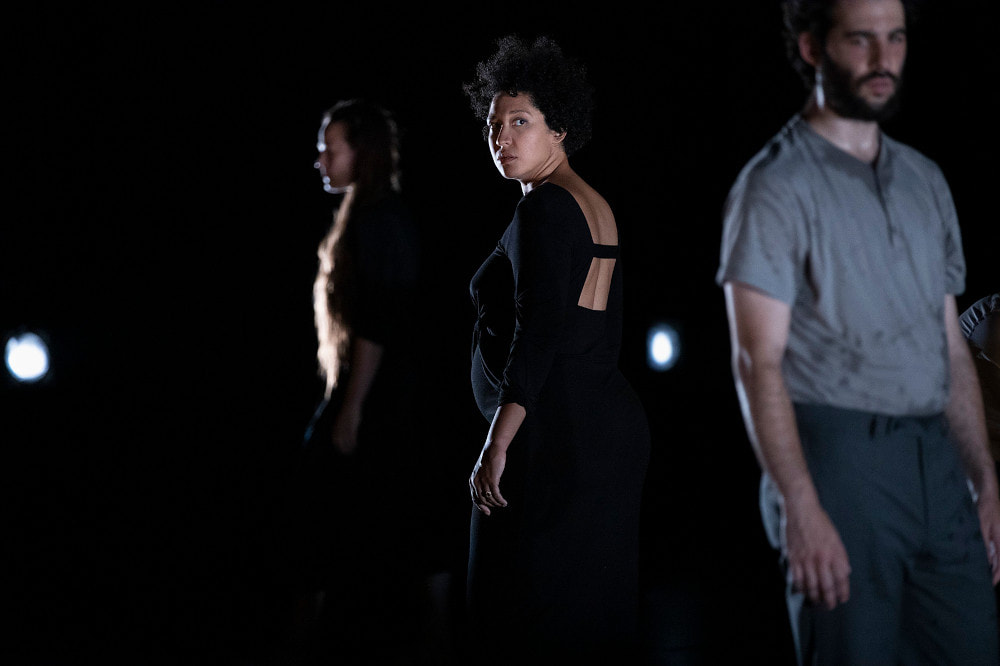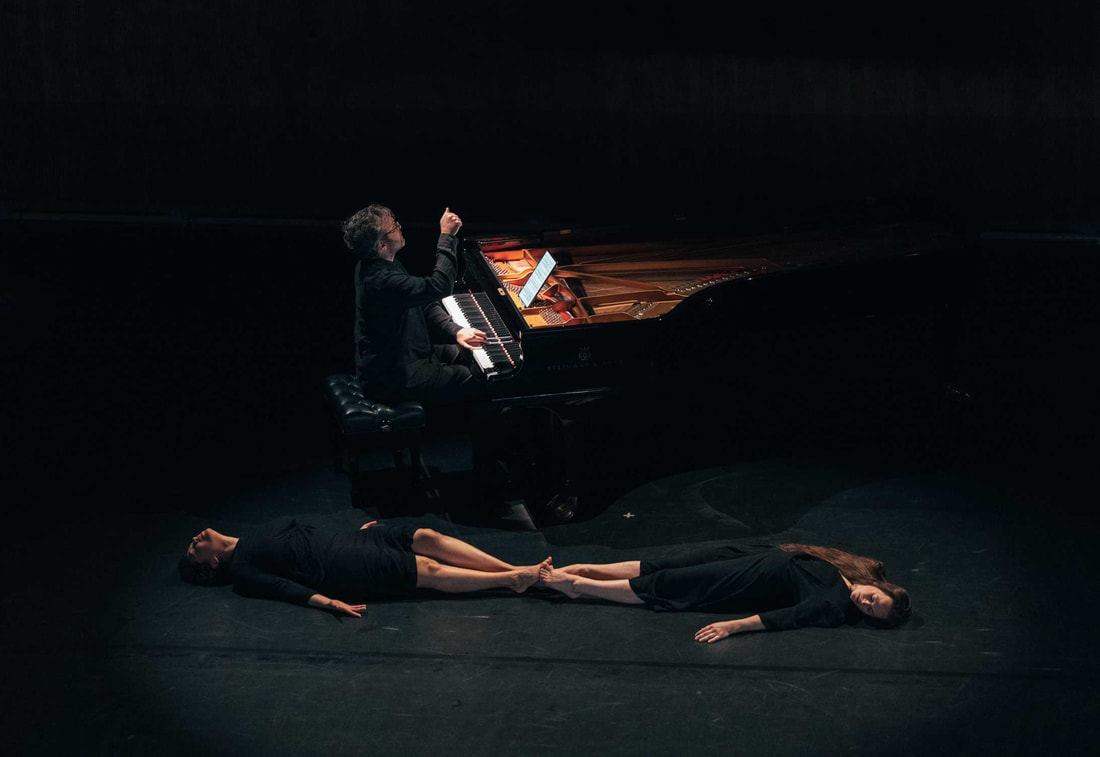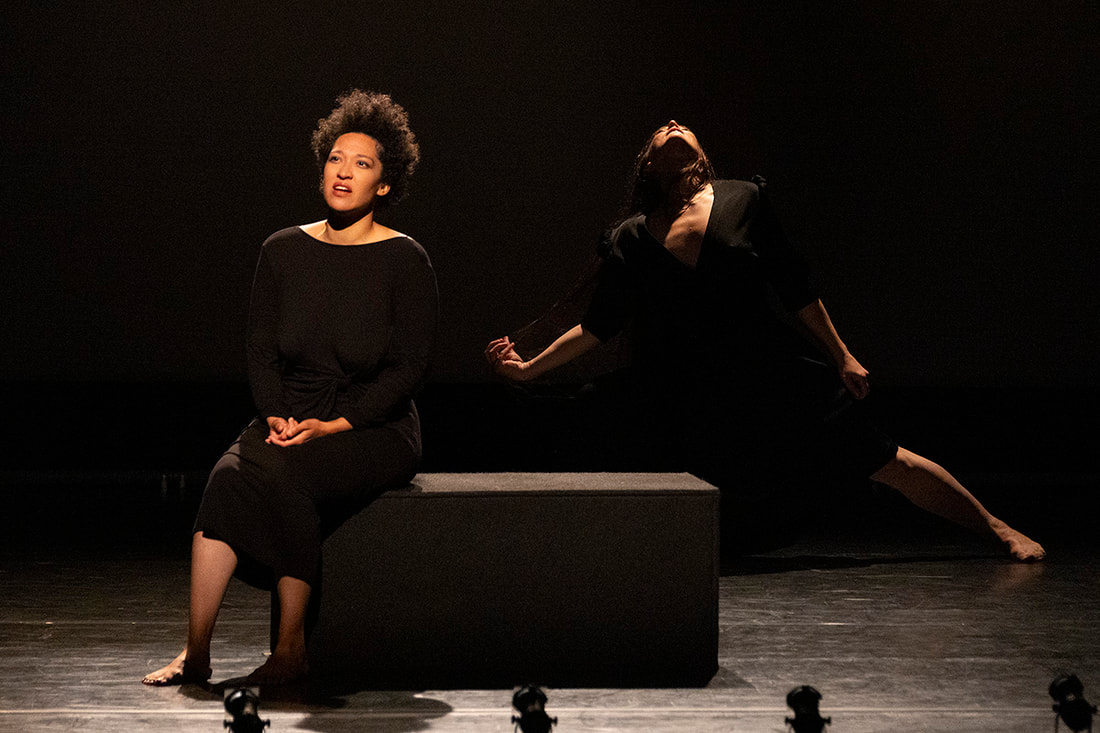Review: Harawi
UCSB Arts & Lectures presents AMOC's ode to Olivier Messiaen
WORDS Ninette Paloma
Conor Hanick sits at an imposing piano, fingers moving wistfully through the first of twelve songs, his piano’s cover discarded in a heap in the corner. Wearing a sheath of black, Julia Bullock enters, her unearthly voice blending French and phonetic poetry with all the casualness of a mourning dove. On a bench, the blazing hair and dagger limbs of Bobbi Jene Smith transform sound into physical devotion, fingers and hips generating heat that rises into the theatre. When Or Schraiber appears, his feet crisp and quick like the imaginary bells dangling from his ankles, Harawi is set in motion. For the next 60 minutes, the ghost of sensuality and the phantom of loss appears then disappears across a stark stage and through each of the four artists, a narrative simmering in melodic rapture and spilling over into kinetic anguish.
Perhaps Olivier Messiaen always imagined his 1946 song-cycle gem Harawi as multidisciplinary performance art – a synesthete, as he was believed to be, seems to cross-reference sensory information with intuitive ease. Did the mystical leaning, esoteric composer somehow envision his “chant d’amour et de mort” (composed in both French and Quechua) to be staged as a conceptual tableau of memories nearly eight decades later? Through the lens of American Modern Opera Company (AMOC) and directed by Zack Winokur, Messiaen’s vivid language swirls around a surrealist landscape where dancers and musician and vocalist engage in what writer Elena Ferrante refers to as smarginatura or the blurring of margins: one moment Bullock is sweeping into Schraiber’s orb enticing him in a sensuous dance, in the next she is languishing on the floor with Smith, feet pressed together, her diaphragm rising rhythmically in horizontal song. This is lyrical theatre on a cosmic plane; an indigenous opera spinning in “planetary repetition” and landing at a wholly relevant moment in time. If UCSB Arts & Lectures resolved to kick off their 65th season with newfound stimulation, then leading with AMOC’s Harawi signals nothing less than a commitment to fresh and provocative programming unlike anything the Central Coast has experienced before. Beyond the marquee events held each year at the Arlington and Granada theatres, arts enthusiasts would be remiss not to take a serious look at the stellar programming happening directly on campus. Make the trek over to Campbell Hall, Santa Barbara, and surrender to those blurring margins. |
